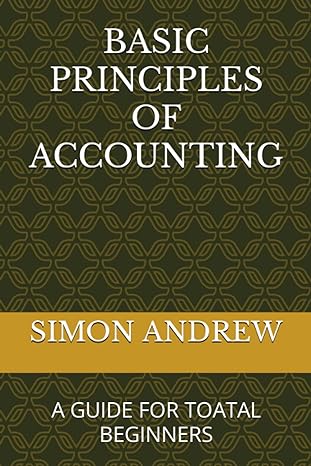Answered step by step
Verified Expert Solution
Question
1 Approved Answer
Edman Company is a merchandiser that has provided the following balance sheet and income statement for this year. Ending Balance Assets Cash Accounts receivable Inventory
Edman Company is a merchandiser that has provided the following balance sheet and income statement for this year. Ending Balance Assets Cash Accounts receivable Inventory Property, plant & equipment (net) Other assets Total assets Liabilities & Stockholders' Equity Accounts payable Bonds payable Common stock Retained earnings Total liabilities & stockholders' equity Beginning Balance 62,800 $ 150,000 160,000 180,000 230,000 240,000 833,000 793,000 37,000 37,000 $1,322,800 $1,400,000 $ 70,000 $ 80,000 550,000 550,000 410,000 410,000 292,800 360,000 $1,322,800 $1,400,000 Sales Variable expenses: Cost of goods sold This Year $2,500,000 1,600,000 Variable selling expense 240,000 Total variable expenses 1,840,000 Contribution margin 660,000 Fixed expenses: Fixed selling expenses 220,000 Fixed administrative expenses 300,000 Total fixed expenses 520,000 Net operating income 140,000 Interest expense (8%) 44,000 Net income before tax Tax expense (30%) Net income 96,000 28,800 $ 67,200 7. Refer to the "Requirement 7 Financials" tab within your template. Assume the company increases its advertising expenditures (a fixed selling expense) in an effort to grow sales with the following estimated impacts: Next year's sales and variable expenses increase by 30%. Next year's fixed selling expense increases by $200,000. Next year's ending balances in accounts receivable, inventory, and accounts payable each increase by 30% compared to their respective beginning balances. Next year's ending balance in property, plant, and equipment (net) decreases by $40,000 compared to its beginning balance to reflect next year's depreciation expense. Next year's ending balances in other assets, bonds payable, and common stock are the same as their beginning balances. a. Based on the above estimated impacts, use Excel formulas to calculate the revised sales, variable expenses, and fixed expense as needed in column B. (Hint: Your formulas should refer to information contained in the "Requirement 1 Financials tab.) What are the revised amounts of sales, the variable expenses, and the fixed selling expense? b. Based on the above estimated impacts, use Excel formulas to calculate ending balances as needed in column C. What is the ending balance in the following accounts? c. Create formulas within column D that calculate next year's average balances for all balance sheet accounts (except Cash which will automatically be computed for you). What is the average balance in the following accounts? d. What is the company's estimated average total liabilities and stockholders' equity for next year? Edman Company Balance Sheets Beginning Ending Average Balanced Sheet: Assets Cash Balance Balance Balance $ 150,000 $ $ 75,000 Accounts receivable $ 180,000 Inventory $ 240,000 Property, plant & equipment (net) $ 793,000 Other assets $ 37,000 Total assets $ 1,400,000 $ $ 75,000 Liabilities & stockholders' equity Accounts payable $ 80,000 Bonds payable $ 550,000 Common stock $ 410,000 Retained earnings $ 360,000 Total liabilities & stocholders' equity $ 1,400,000 $ Edman Company Income Statement Sales Variable expenses: Cost of goods sold Variable selling expense Total variable expenses Contribution margin Fixed expenses: Fixed selling expense Fixed administrative expense 300,000 Total fixed expenses 300,000 Net operating income (300,000) Interest expense (8%) Net income before tax Tax expense (30%) Net income (300,000) (90,000) $ (210,000) 8. Refer to the "Requirement 8 DuPont Diagram" tab within your template. For alternative 3, complete the diagram by using appropriate formulas and reference cells. (In some instances your formulas and reference cells will refer to the Requirement 7 Financials tab.) a. Which choice shows the formula used to compute the return on investment? b. What is this alternative's estimated margin, turnover, and return on investment (ROI)? c. If the company pursues this alternative, would it cause next year's ROI to be greater than, less than, or equal to this year's ROI (as computed in Requirement 2b)? Cost of goods sold Sales Selling expense Expenses Admin expense Cash Accounts receivable Current assets Inventories Plant and equipement Noncurrent assets Other assets Net operating income Sales Sales Avg operating assets Margin X Return on investment Turnover
Step by Step Solution
There are 3 Steps involved in it
Step: 1

Get Instant Access to Expert-Tailored Solutions
See step-by-step solutions with expert insights and AI powered tools for academic success
Step: 2

Step: 3

Ace Your Homework with AI
Get the answers you need in no time with our AI-driven, step-by-step assistance
Get Started


